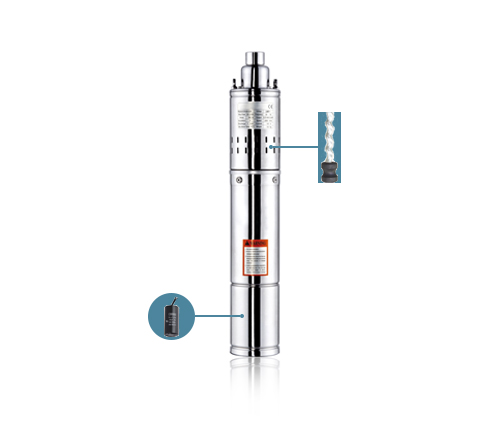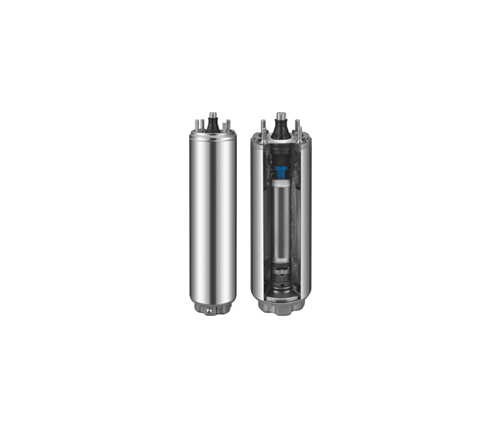Industry News
View All Products
en
In the realm of water extraction, borehole submersible pumps stand out as a vital tool for accessing groundwater resources efficiently and reliably. These specialized pumps are designed to operate deep within boreholes, drawing water to the surface with precision and effectiveness. But how exactly does a borehole submersible pump ensure high-quality water extraction? In this article, we will explore the intricacies of borehole submersible pumps, examining their components, functions, and the mechanisms behind their ability to deliver clean, high-quality water.
Understanding Borehole Submersible Pumps:
Borehole submersible pumps are specifically designed for use in boreholes, which are narrow, deep wells drilled into the earth to access groundwater reserves. Unlike surface pumps that are installed above ground and rely on suction to draw water, submersible pumps are submerged directly into the water source, allowing them to operate more efficiently and effectively at greater depths.
These pumps consist of several key components, including a motor, impellers, pump housing, and electrical cables. The motor is typically housed in a sealed compartment to protect it from water damage, while the impellers are responsible for generating hydraulic pressure to lift water to the surface. The pump housing encloses the motor and impellers, providing structural support and ensuring proper alignment during operation. Electrical cables connect the pump to a power source, allowing for remote control and monitoring of pump performance.
Functionality and Operation:
The operation of a borehole submersible pump begins with the motor, which converts electrical energy into mechanical energy to drive the impellers. As the impellers rotate, they create a centrifugal force that forces water into the pump housing and up through the discharge pipe to the surface. The pressure generated by the impellers is sufficient to overcome the resistance of the water column and lift water from the bottom of the borehole to ground level.
One of the key advantages of borehole submersible pumps is their ability to operate efficiently at great depths. Unlike surface pumps, which may struggle to lift water from deep wells due to limitations in suction power, submersible pumps are immersed directly in the water source, eliminating the need for suction and minimizing energy losses during pumping.
Ensuring High-Quality Water Extraction:
Borehole submersible pumps play a crucial role in ensuring high-quality water extraction by virtue of their design and operational characteristics. Several factors contribute to their ability to deliver clean, uncontaminated water from underground reservoirs:
Submersion: By operating below the water level, borehole submersible pumps minimize the risk of contamination from surface pollutants, debris, and bacteria. This submersion also helps to maintain consistent water pressure and flow rates, ensuring reliable performance even in fluctuating groundwater conditions.
Sealed Design: The sealed design of borehole submersible pumps prevents water from entering the motor compartment, protecting internal components from corrosion and damage. This feature is especially important in environments with high levels of dissolved minerals or abrasive particles, which can accelerate wear and reduce pump lifespan.
Filtration and Purification: Some borehole submersible pumps are equipped with built-in filtration and purification systems to remove impurities and contaminants from the water. These systems may include sediment filters, activated carbon filters, or UV sterilization units, depending on the specific requirements of the application.
Efficiency: Borehole submersible pumps are engineered for high efficiency, with optimized hydraulic designs and energy-efficient motors that minimize power consumption and operating costs. This efficiency not only reduces the environmental footprint of water extraction but also ensures reliable operation over extended periods without excessive maintenance or downtime.
Applications and Considerations:
Borehole submersible pumps find widespread use in a variety of applications, including domestic water supply, agricultural irrigation, industrial water management, and municipal water distribution. Their versatility, reliability, and ability to extract clean water from deep underground sources make them indispensable tools for meeting the water needs of communities and industries around the world.
When selecting a borehole submersible pump for a particular application, several factors should be taken into consideration, including the depth and diameter of the borehole, the desired flow rate and pressure, the quality of the groundwater source, and any specific regulatory requirements or environmental considerations.
Conclusion:
In conclusion, borehole submersible pumps play a critical role in ensuring high-quality water extraction from underground reservoirs. Through their submersiealed design, filtration capabilities, and operational efficiency, these pumps deliver clean, uncontaminated water for a wide range of applications. Whether supplying drinking water to remote communities, irrigating agricultural fields, or supporting industrial processes, borehole submersible pumps offer a reliable and sustainable solution for accessing groundwater resources and meeting the water needs of society.
